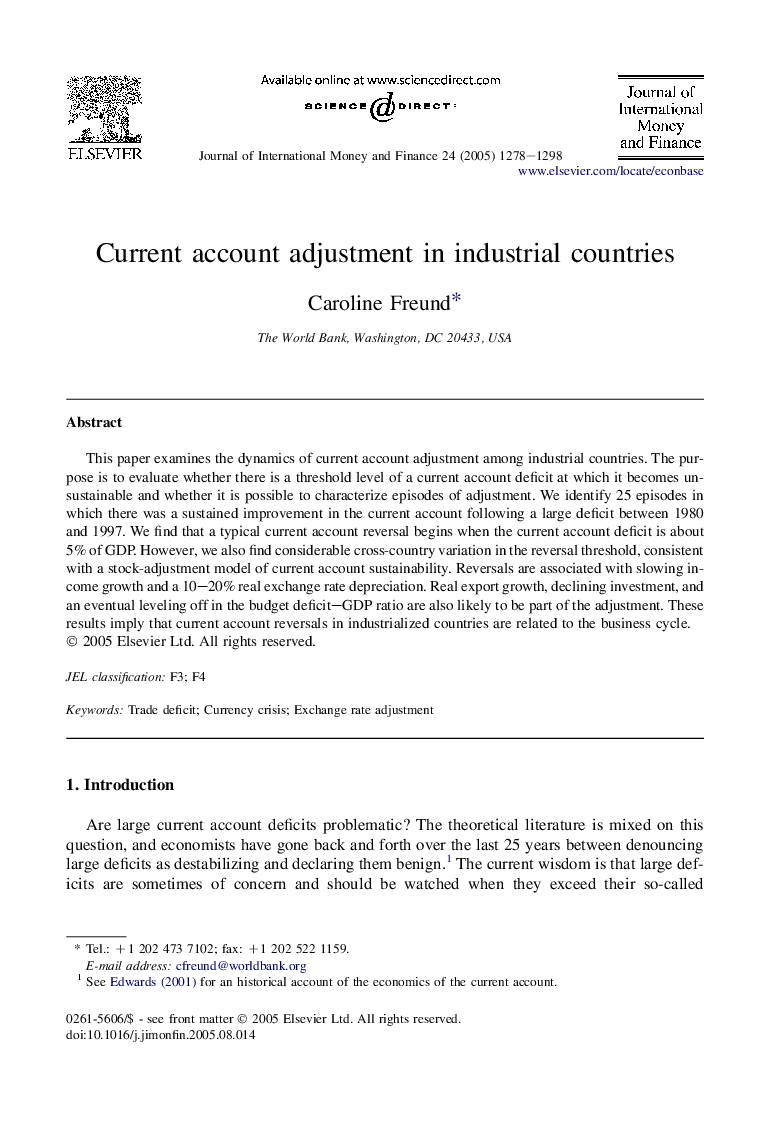| Article ID | Journal | Published Year | Pages | File Type |
|---|---|---|---|---|
| 10477783 | Journal of International Money and Finance | 2005 | 21 Pages |
Abstract
This paper examines the dynamics of current account adjustment among industrial countries. The purpose is to evaluate whether there is a threshold level of a current account deficit at which it becomes unsustainable and whether it is possible to characterize episodes of adjustment. We identify 25 episodes in which there was a sustained improvement in the current account following a large deficit between 1980 and 1997. We find that a typical current account reversal begins when the current account deficit is about 5% of GDP. However, we also find considerable cross-country variation in the reversal threshold, consistent with a stock-adjustment model of current account sustainability. Reversals are associated with slowing income growth and a 10-20% real exchange rate depreciation. Real export growth, declining investment, and an eventual leveling off in the budget deficit-GDP ratio are also likely to be part of the adjustment. These results imply that current account reversals in industrialized countries are related to the business cycle.
Related Topics
Social Sciences and Humanities
Economics, Econometrics and Finance
Economics and Econometrics
Authors
Caroline Freund,
